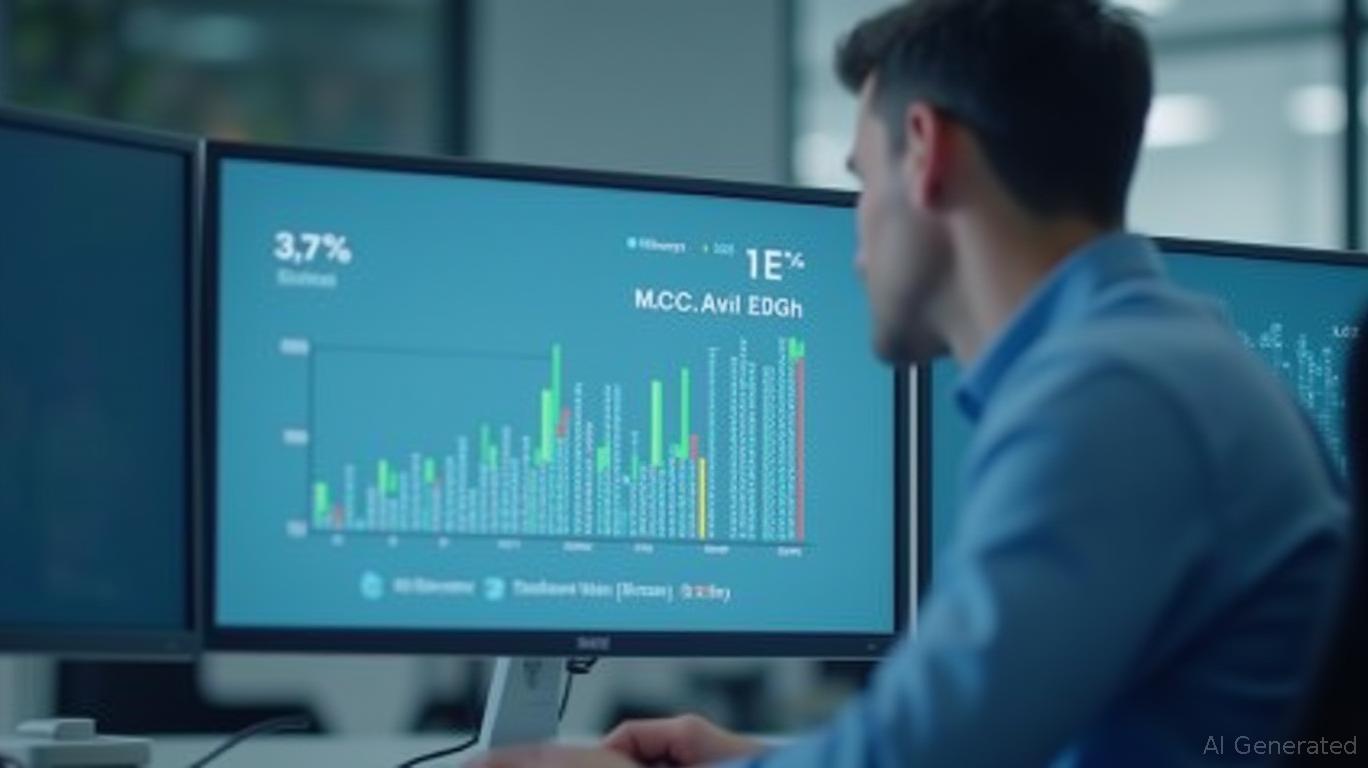Deliveroo plc (LON:ROO) Could Be Less Than A Year Away From Profitability
Deliveroo plc (LON:ROO), the UK-based food delivery giant, has long been a poster child for the challenges of scaling a high-growth, capital-intensive business. Yet its recent financial results suggest it may finally be turning a corner. WithAdjusted EBITDA soaring 52% year-on-year to £130 million in 2024 and free cash flow turning positive for the first time, the company is now eyeing profitability within the next 12 months. But can Deliveroo sustain this momentum, or will lingering risks like tax headwinds and shifting consumer habits derail its progress?

The Financial Turnaround: Numbers Tell the Story
Deliveroo’s 2024 performance was marked by a blend of disciplined execution and strategic pruning. Gross Transaction Value (GTV) grew 6% year-on-year in constant currency, with UK/Ireland markets expanding 7%—a critical region contributing over 50% of its GTV. The company’s focus on high-margin categories like grocery paid off, with that segment accounting for 16% of group GTV in the second half of 2024.
Perhaps most striking was the leap in profitability metrics. Adjusted EBITDA surged to £130 million, while free cash flow reached £86 million, including a £60 million working capital benefit. Management also announced a £120 million buyback in 2024, signaling confidence in its balance sheet—bolstered by a net cash position of £668 million.
Navigating Headwinds: Hong Kong Exit and Tax Challenges
Not all metrics were rosy. Deliveroo’s decision to exit Hong Kong—citing demographic shifts and price-sensitive consumers—highlighted its ruthless focus on profitability. While the move reduced its global footprint to 10 markets, CEO William Shu emphasized the remaining regions are “positive contributors” with manageable complexity.
Taxation remains a looming threat. The UK’s Digital Services Tax, which targets large tech firms, is expected to pressure margins in 2025. CFO Scilla Grimble noted the one-time impact, but stressed that 2026 should see relief as the tax’s effects diminish. Meanwhile, strategic pricing adjustments—such as lowering take rates to boost merchant and consumer satisfaction—explain why revenue grew slower than GTV.
2025: The Year of Margin Progression?
Management’s 2025 guidance is cautiously optimistic. Deliveroo aims for high-single-digit GTV growth (excluding Hong Kong) and an Adjusted EBITDA range of £170–190 million. This would imply an adjusted EBITDA margin of ~2%, up from 2024’s 1.6%.
The path forward hinges on three pillars:
1. Efficiency Gains: Expanding its “multi-pickup stacking” initiative (which grew 50% in 2024) to optimize rider routes without sacrificing consumer experience.
2. Merchant Partnerships: Scaling its new “commercial architecture,” which incentivizes lower pricing through exclusive contracts and data-driven tools.
3. Geographic Focus: Prioritizing markets like the UAE, where Deliveroo’s differentiated customer value proposition (CVP) is driving growth.
Risks and Opportunities Ahead
While Deliveroo’s near-term path to profitability looks achievable, risks persist. A potential slowdown in consumer spending in Europe, rising labor costs (e.g., the April 2025 National Living Wage hike), and intense competition from rivals like Just Eat Takeaway.com could test its margins.
On the flip side, Deliveroo’s underpenetrated grocery segment and untapped ad revenue opportunities (now 1.4% of GTV) offer significant upside. The company’s normalized free cash flow of £72 million in 2024 suggests it could self-fund growth initiatives without diluting shareholders—a rare luxury in the delivery space.
Conclusion: Profitability in Sight, But Execution is Key
Deliveroo’s progress in 2024—from positive free cash flow to margin expansion—lays a solid foundation for profitability. With £170–190 million in Adjusted EBITDA now in sight for 2025, the company appears on track to achieve its goal within 12 months.
However, the journey won’t be without hurdles. Navigating tax headwinds, labor costs, and shifting consumer preferences will require precision. Yet Deliveroo’s liquidity ($668 million net cash), operational discipline, and focus on high-margin categories give it the resilience to succeed.
For investors, Deliveroo represents a compelling bet on a once-struggling delivery giant now poised to enter the black. With a stock price that’s risen 25% since hitting a 52-week low in early 2024 (as of the time of writing), the question is no longer if Deliveroo can profit, but when investors will fully reward its transformation.
The answer, it seems, is sooner than many expect.









